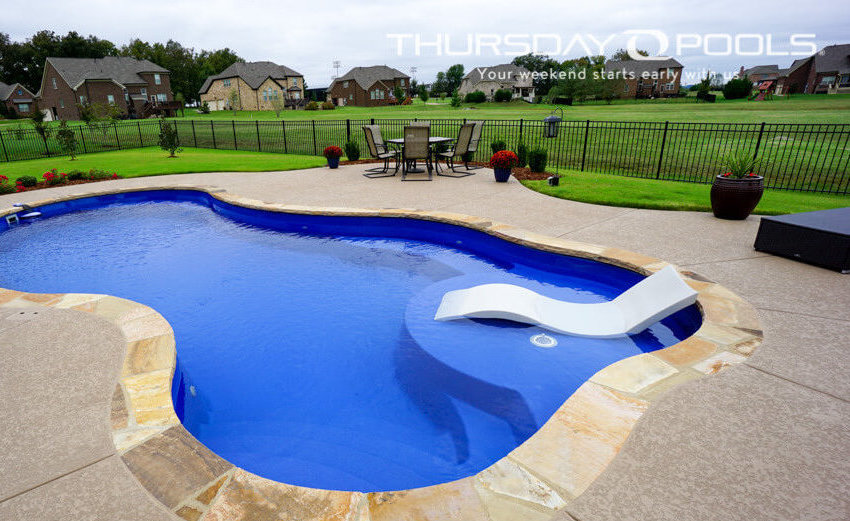From the snow-capped peaks of the Wasatch Mountains to the red rock canyons of southern Utah, the Beehive State offers some of the most breathtaking landscapes in the country. And with Utah’s dry, sunny climate, having a backyard pool isn’t just a luxury—it’s an oasis. If you’re considering a fiberglass pool for your home, understanding fiberglass pool cost in Utah is crucial. Whether you’re in the bustling neighborhoods of Salt Lake City or on a sprawling estate in rural areas like Moab, factors like terrain, soil type, and climate play a significant role in the cost of your pool. The unique geology of Utah—from the rocky soils in the north to the sandy soils in the southern desert—means that site preparation and excavation costs can vary, impacting your overall investment.
Creating a pool that matches your vision is about personalization, which can influence your final budget. Features like built-in spas, tanning ledges, and custom landscaping can add beauty and function but come with additional costs. The process can seem overwhelming with local permitting requirements, community regulations, and potential HOA restrictions. That’s why working with an experienced Utah-based fiberglass pool installer is key to navigating the complexities of cost and design, ensuring your backyard retreat becomes a reality that suits your lifestyle and budget.
What’s the Average Cost of a Fiberglass Pool in Utah? Insights from Our 2025 Survey
To give you a clearer picture of what to expect when budgeting for a fiberglass pool in Utah, Thursday Pools gathered valuable insights from our trusted independent dealers across the state in a 2025 survey. Whether you’re in the Salt Lake Valley or looking to create a desert oasis in St. George, understanding the average installation cost is key to getting started on your pool journey.
AVERAGE UTAH FIBERGLASS POOL INSTALLATION BY SIZE
|
| Pool Type |
Small Fiberglass Pools |
Medium Fiberglass Pools |
Large Fiberglass Pools |
| Size Range |
Up to 26 ft Long or 400 ft² |
26 to 34 ft Long or 400 to 600 ft² |
35 ft and Longer or 600+ ft² |
| Average Cost |
$100,000 |
$120,000 |
$140,000 |
While these numbers provide a useful starting point, the total cost of your fiberglass pool can vary based on Utah’s diverse terrain. Rocky soils in the north or sandy conditions in the south can affect excavation costs, and design features like custom spas, premium decking, or lavish landscaping will also influence the price. For the most accurate estimate, it’s best to consult a local, experienced Thursday Pools dealer who can give you a tailored quote based on your location and preferences.
Average Prices for Popular Fiberglass Pools Installed in Utah
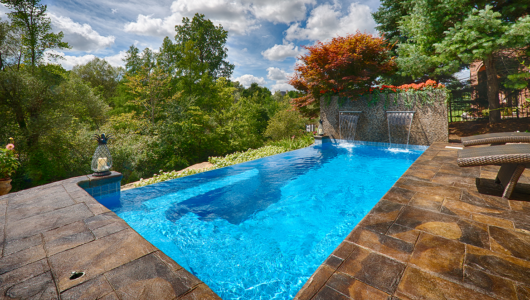
SEA TURTLE (9.5’ x 19.5’)
The Sea Turtle is a great option for Utah homeowners who want a stylish, space-saving pool that fits well in compact outdoor areas. At just 19.5 feet in length, this petite fiberglass model is perfect for smaller backyards in cities like Ogden, Logan, or Cedar City. With built-in bench seating, it offers a refreshing retreat from Utah’s summer heat without the maintenance demands of a full-sized pool.
Our 2025 survey of Thursday Pools dealers in Utah shows that the average cost for a standard Sea Turtle installation and similar fiberglass pools under 26 feet or 400 square feet is $100,000.
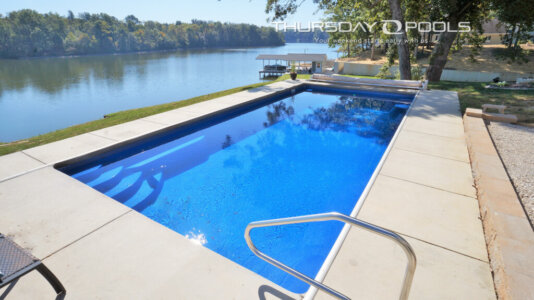
GOLIATH (14’ x 33’)
The Goliath is a spacious fiberglass pool that accommodates active families in Utah. Its expansive rectangular shape provides a generous swim lane, perfect for exercise or play in the state’s sunny climate. The pool also features dual corner entry steps with integrated benches, offering comfortable seating in the shallow end for socializing or unwinding after a day in the great outdoors.
According to our dealer survey results, the typical cost for a standard installation of the Cathedral and other medium-sized pool models between 26 and 34 feet in length or 400 to 600 square feet is $120,000.
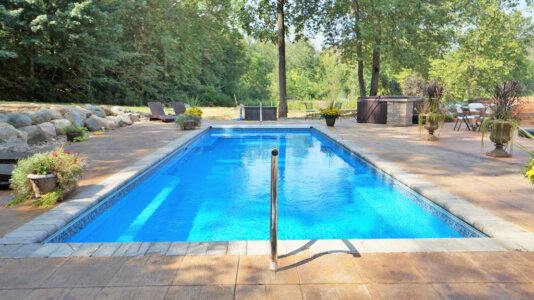
SPIRIT (13.5’ x 40’)
The Spirit brings a modern fiberglass pool design to properties seeking elegance and efficient use of space. Measuring 40 feet in length, the Spirit is perfect for homeowners who want a pool that combines exercise-friendly features with areas for relaxation. With a built-in tanning ledge, full-length swim lane, and dual-end benches, the Spirit is ideal for lap swimmers and loungers alike.
The Spirit and similar 40-foot models are a great fit for suburban or rural properties with room for a streamlined yet stylish pool. The average cost for a standard installation of a fiberglass pool this size in Utah is approximately $140,000.
Assessing Your Utah Property for Fiberglass Pool Installation
Utah’s diverse landscape can impact both the cost and process of fiberglass pool installation. Rocky or uneven terrain, common in areas like the Wasatch Mountains, may require extra excavation and equipment, increasing costs. Flatter regions like the Great Salt Lake Basin may pose fewer digging challenges but could need special treatments for alkaline soil.
The layout of your property is crucial, too. Additional grading may be necessary if you have a sloped yard, which is common in places like Park City. Urban areas like Salt Lake City might face access issues, with narrow streets or gated communities requiring cranes to transport and install the pool shell.
Partnering with a local pool expert can help you navigate Utah’s unique challenges, ensuring a smooth and cost-effective installation.
AVERAGE ADDITIONAL YARD-RELATED EXPENSES IN UTAH
|
| Above-Average Slope Requiring Extra Grading |
$15,800 |
| Limited Yard Access |
$7,700 |
Navigating Pool Barrier Safety Regulations in Utah
Pool safety regulations are crucial to preventing accidents and unauthorized access, particularly for young children and family pets. While no statewide law mandates residential Utah pool enclosures, many cities and counties enforce local safety standards. Generally, Utah regulations require surrounding in-ground pools with a barrier at least 4 feet tall with a self-closing, self-latching gate. Barriers and fences must also meet specific guidelines for gap sizes, gate placement, and durability to ensure safety and security.
Local requirements can vary significantly across the state. For example, some areas may mandate higher fences, additional locking mechanisms, or specific distances between the pool and property lines. According to Utah’s legal code, homeowners must enclose their pool with a secure barrier to prevent unauthorized access.
Before proceeding with your pool installation, it’s essential to check with your local building department or homeowners association to confirm specific regulations for your area. A local pool professional familiar with Utah’s requirements can guide you through the permitting process and ensure your pool complies with all safety standards.
Enhance Your Utah Fiberglass Pool with Must-Have Add-Ons
Upgrading your fiberglass pool with popular add-ons can transform your Utah backyard into a personal oasis, adding style, comfort, and functionality. Whether you want to extend your swimming season, enhance the pool’s appearance, or add relaxation features, these upgrades allow you to customize your space to fit your lifestyle. Below are some of the most popular add-ons for Utah homeowners, along with pricing insights from our 2025 survey of Thursday Pools’ independent dealers in the state.
Pool Heating & Maintenance Systems
Pool Heater Average Cost in Utah: $7,500
Ensure your pool is comfortable year-round with a pool heater that keeps the water at the perfect temperature—even during Utah’s chilly winters.
Automatic Pool Cleaner & Vacuum System Average Cost in Utah: $1,700
Save time and energy by installing an automatic cleaning system that keeps your pool pristine with minimal maintenance.
Pool Automation & Smart Control System Average Cost in Utah: $11,400
Control your pool’s temperature, filtration, and lighting directly from your smartphone or tablet for ultimate convenience and easy access from anywhere.
Pool Cover Solutions
Automatic Pool Cover Average Cost in Utah: $15,700
Enhance safety and convenience with an automatic pool cover that keeps debris out, reduces water evaporation, and offers added protection for families with kids or pets.
Manual Safety Pool Cover Average Cost in Utah: $100
A cost-effective option for securing your pool and keeping it clean. This durable cover helps prevent unauthorized access and keeps debris out.
Pool Decking & Landscaping
Concrete Patio (Approx. 1,200 sq. ft.)Average Cost in Utah: $14,600
A durable, affordable choice that works well with Utah’s climate and provides a sleek, solid poolside surface.
Paver Patio (Approx. 1,200 sq. ft.) Average Cost in Utah: $15,700
Stylish and slip-resistant, paver patios come in materials like concrete, brick, or natural stone, giving you a customizable look for your pool area.
Stylish Pool Features & Accents
LED Pool Lights Average Cost in Utah: $1,941 per light
Create the perfect mood after dark with LED pool lights. Choose from vibrant, color-changing, or crisp white lights for an energy-efficient, stunning effect.
Deck Jets Average Cost in Utah: $1,800 per jet
Add visual appeal with graceful water streams arching into your pool, creating a dynamic effect.
Bubblers Average Cost in Utah: $1,300 per bubbler
For shallow areas or tanning ledges, bubblers offer gentle bubbling water effects, providing a relaxing and fun element.
Cascading Waterfalls Average Cost in Utah: $7,200
Bring nature’s calming sounds to your backyard with a built-in waterfall feature that enhances your pool’s aesthetic and provides a spa-like ambiance.
Add-On Spa Average Cost in Utah: $15,800
Take your relaxation experience to the next level with a spillover spa that blends seamlessly into your pool, providing both therapeutic benefits and visual appeal.
Fun Pool Slides & Diving Features
Simple Pool Slide Average Cost in Utah: $5,900
Add a playful touch to your pool with a simple slide, perfect for family fun and enjoyment.
Deluxe Pool Slide Average Cost in Utah: $7,100
For a more thrilling experience, a deluxe slide with added height and curves brings extra excitement to your pool area.
Diving Board (Type 1 Diving Pools Only) Average Cost in Utah: $5,000
Diving boards are only permitted in certified Type 1 diving pools, which must meet specific depth and slope requirements. Proper installation is key for safe use.
Thursday Pools strongly advises against adding slides or diving boards due to safety concerns. Not all fiberglass pool models are designed to support these features. If you’re considering these additions, consult a licensed professional to ensure compliance with local codes, safety standards, and manufacturer specifications. Homeowners and installers share responsibility for safe installation and use. Prioritize safety and expert advice before incorporating these elements into your pool.
Transform Your Utah Backyard with a Custom Fiberglass Pool
A fiberglass pool in Utah is more than just a home improvement—it’s a year-round escape for relaxation, family time, and outdoor living. Whether you’re enjoying the scenic beauty of Salt Lake City, the suburban calm of Provo, or the red rock landscapes of St. George, a well-designed pool can elevate your backyard and add long-term value to your home.
Utah’s unique geography—from sloped mountain lots to wide-open desert yards—means that every property comes with its own opportunities and challenges. That’s why working with a trusted local Thursday Pools dealer is essential. Your dealer will assess everything from soil composition and yard accessibility to climate considerations and design preferences to help create a pool that fits your lifestyle, location, and vision.
Ready to get started? Use the Thursday Pools Pool Cost Calculator to explore pricing, try the Pool Selector Tool to find your perfect model, and connect with a Utah dealer to start designing your dream backyard retreat today.
Get Your Personalized Estimate
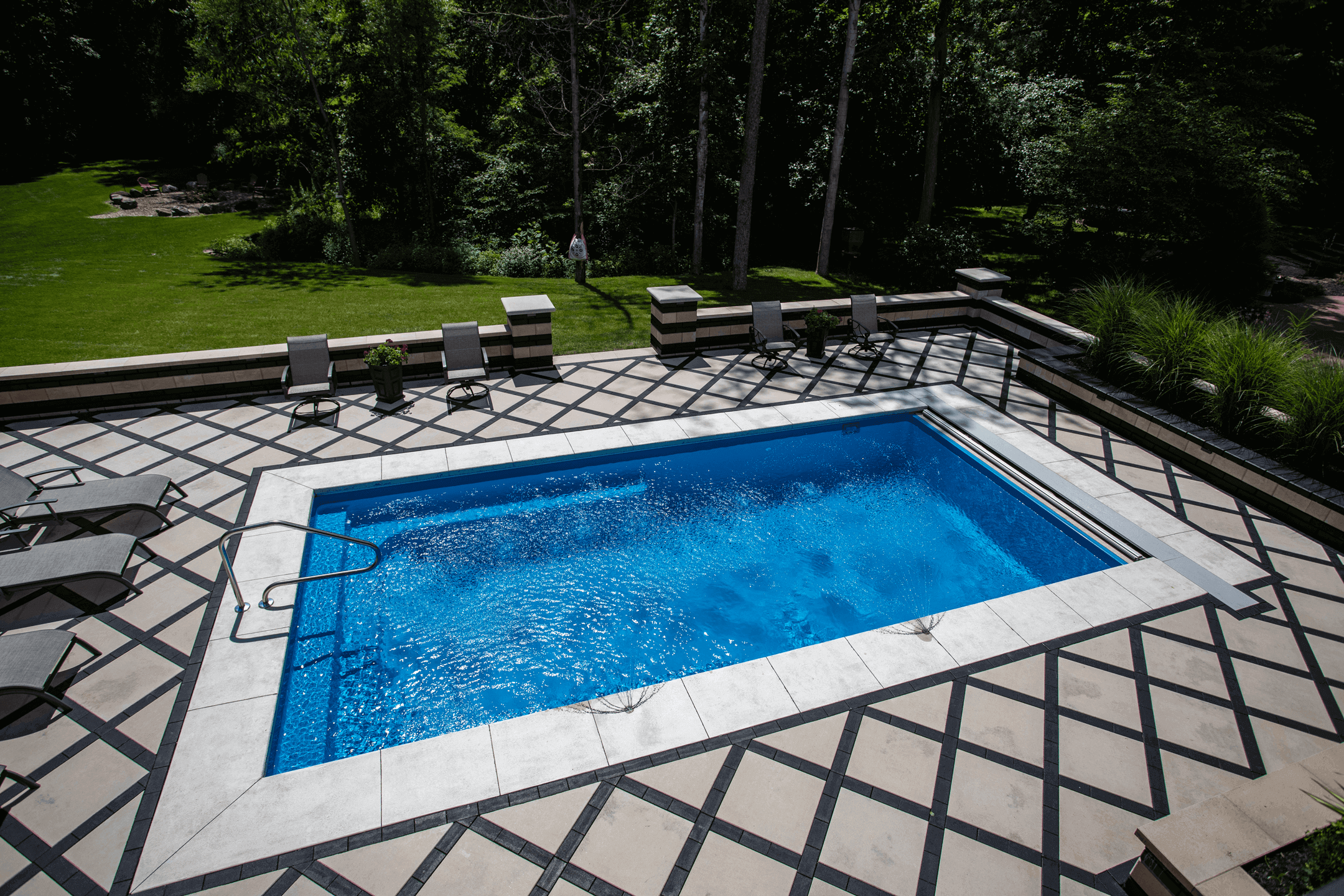
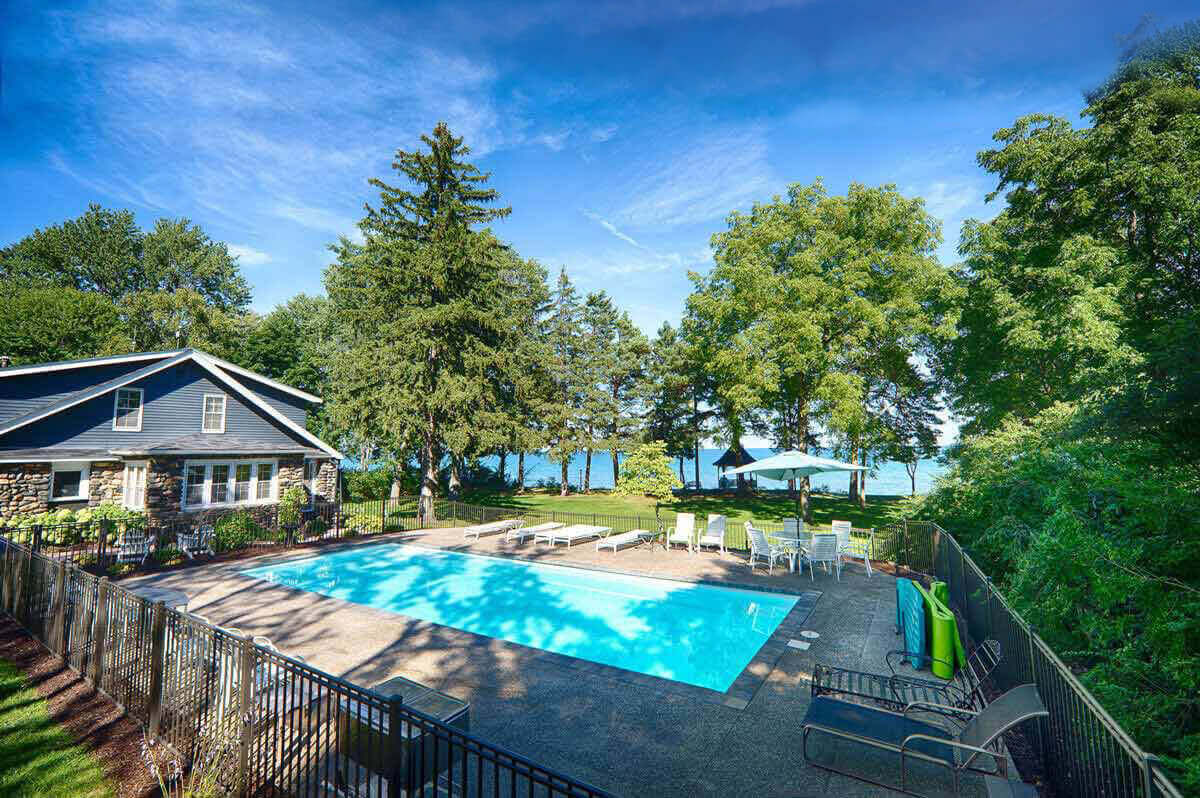

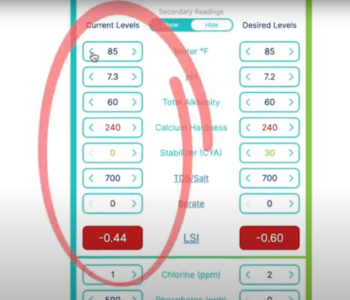
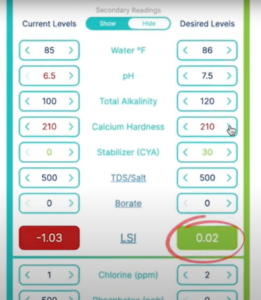
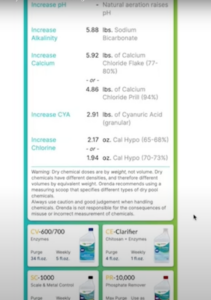
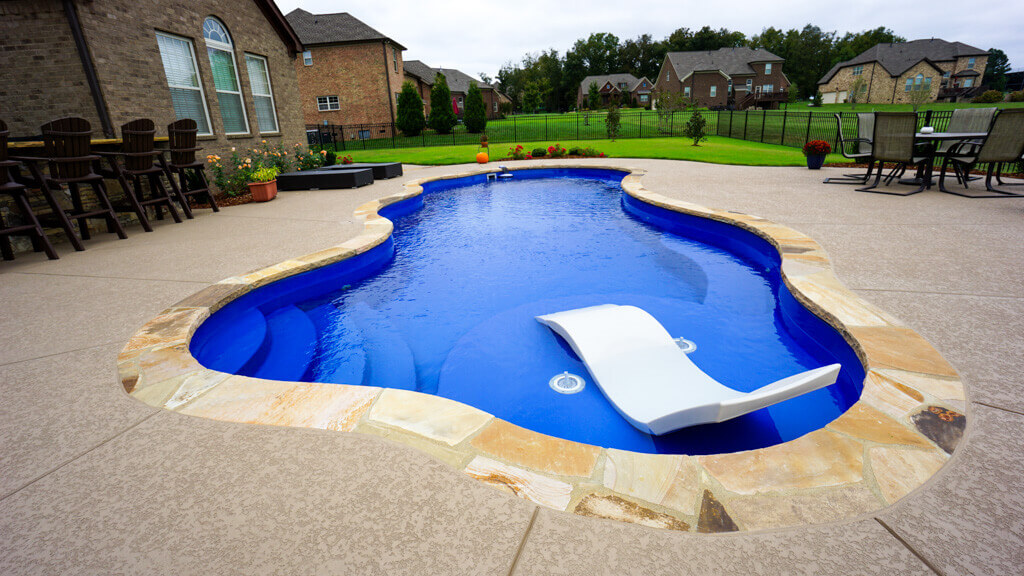
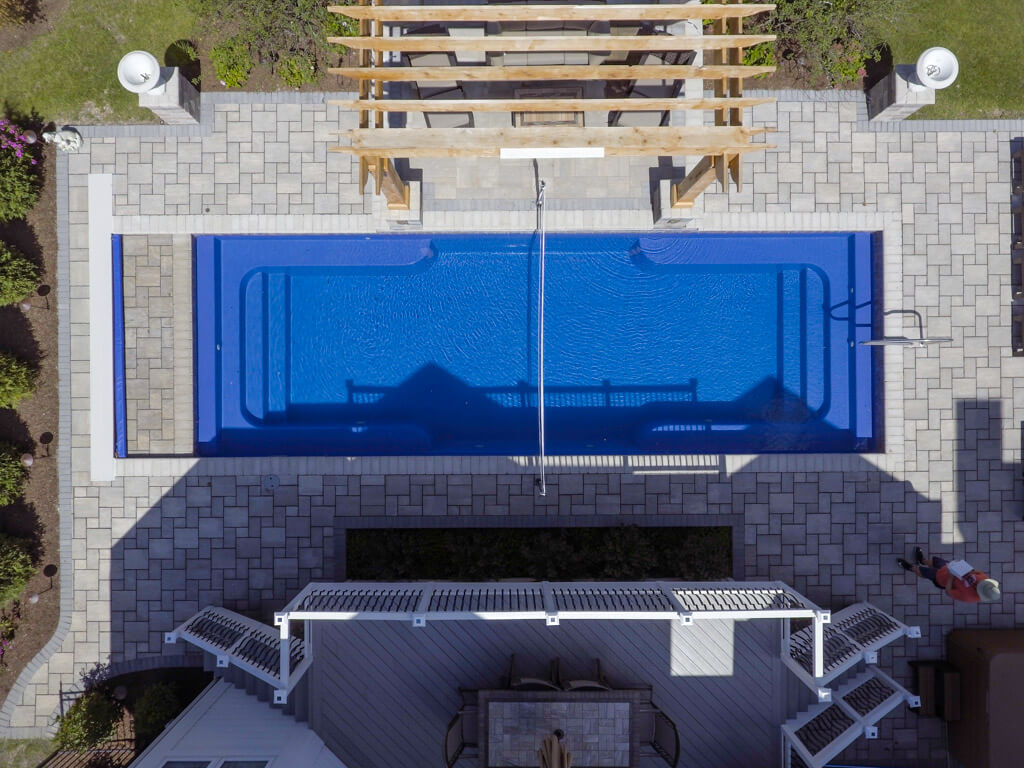
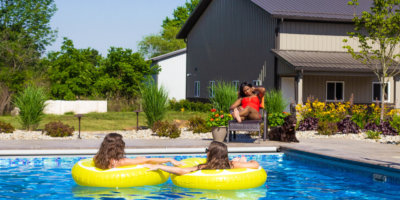 on fiberglass vs gunite (concrete), you’ve narrowed your decision tree a bit by throwing out vinyl as an option. This post will consider a concrete pool vs fiberglass pool to help you narrow your choices even further.
on fiberglass vs gunite (concrete), you’ve narrowed your decision tree a bit by throwing out vinyl as an option. This post will consider a concrete pool vs fiberglass pool to help you narrow your choices even further. 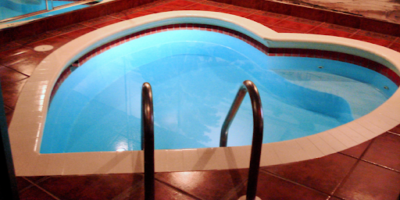
 Fiberglass pools came into the swimming pool market in the 1950s and have tripled in popularity in the last 20 years. These pools have become a hot commodity due to innovative manufacturing techniques, easier installation, lower maintenance, and luxurious designs with unique features like
Fiberglass pools came into the swimming pool market in the 1950s and have tripled in popularity in the last 20 years. These pools have become a hot commodity due to innovative manufacturing techniques, easier installation, lower maintenance, and luxurious designs with unique features like 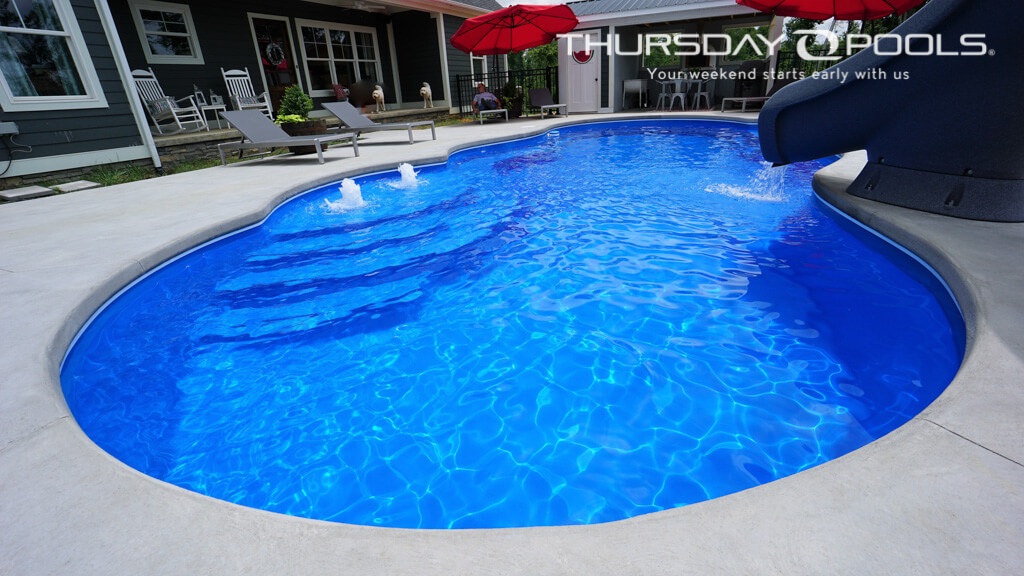
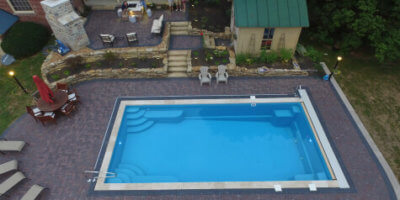
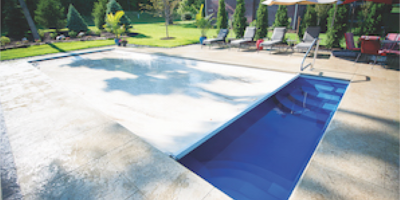
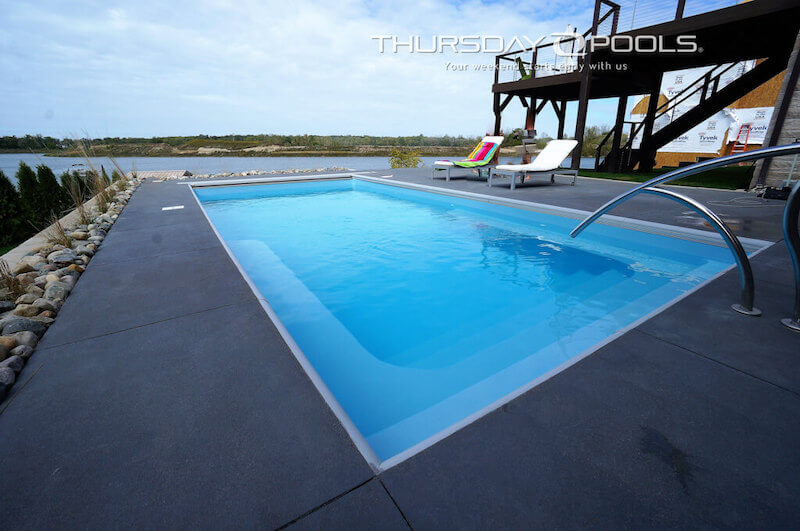
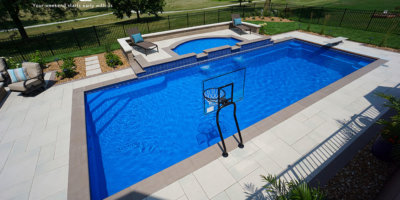 If you are considering an inground pool, you will quickly realize that much information is available. You will likely first consider what type of pool is right for you as you compare the three different inground pool types. Looking for the pros and cons of fiberglass pools vs. concrete or vinyl liners can help you narrow down your preferred pool type. If you’ve already narrowed it down to fiberglass pools, you may even have Googled, “What is the downside to fiberglass pools?” or “
If you are considering an inground pool, you will quickly realize that much information is available. You will likely first consider what type of pool is right for you as you compare the three different inground pool types. Looking for the pros and cons of fiberglass pools vs. concrete or vinyl liners can help you narrow down your preferred pool type. If you’ve already narrowed it down to fiberglass pools, you may even have Googled, “What is the downside to fiberglass pools?” or “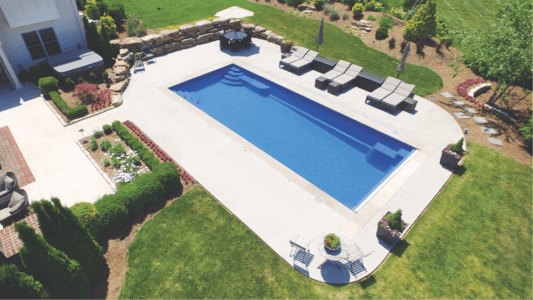
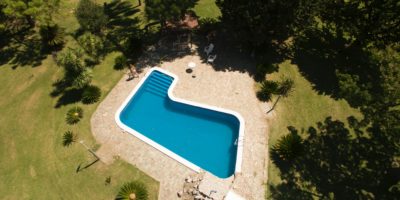 Concrete pools allow for customization and creativity. They offer the most flexibility of all pools, allowing the buyer to choose the look, feel, shape, depth, size, and features. The concrete pool surface is typically rough, and as a result, can snag swimsuits and scrape kids’ feet and dogs’ paws. The cost can be higher, ranging from $50,000 to $120,000 and up. Concrete pool costs vary broadly based on customizations and region of the country.
Concrete pools allow for customization and creativity. They offer the most flexibility of all pools, allowing the buyer to choose the look, feel, shape, depth, size, and features. The concrete pool surface is typically rough, and as a result, can snag swimsuits and scrape kids’ feet and dogs’ paws. The cost can be higher, ranging from $50,000 to $120,000 and up. Concrete pool costs vary broadly based on customizations and region of the country. 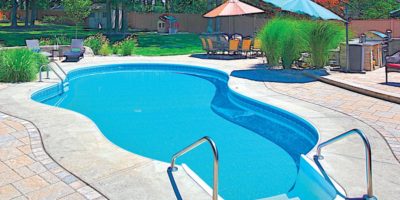 steel brush on its more delicate surface. Your level of care will depend in part on how much you use it and how proactive you are with regular maintenance. Its propensity to rip can result in the need for patching and or liner replacements. Liner replacements can be a $3,000 to $7,500 investment every five to seven years. If water chemistry isn’t carefully maintained, the liner may need to be replaced more often. The seams of a vinyl pool can also collect algae, keeping your regular chemistry costs about double to fiberglass. With a vinyl pool, you can save a little money by filtering one time per day and using fewer chemicals than you would with concrete, and you may not need to hire a professional as often as you might with a concrete pool.
steel brush on its more delicate surface. Your level of care will depend in part on how much you use it and how proactive you are with regular maintenance. Its propensity to rip can result in the need for patching and or liner replacements. Liner replacements can be a $3,000 to $7,500 investment every five to seven years. If water chemistry isn’t carefully maintained, the liner may need to be replaced more often. The seams of a vinyl pool can also collect algae, keeping your regular chemistry costs about double to fiberglass. With a vinyl pool, you can save a little money by filtering one time per day and using fewer chemicals than you would with concrete, and you may not need to hire a professional as often as you might with a concrete pool. 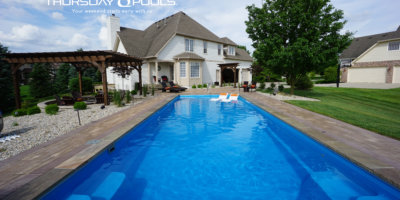 Fiberglass today provides the best of both worlds. Like a vinyl pool, it is quick to install—quicker in that it comes as an entirely manufactured shell ready to be dropped into an excavated backyard spot. While not as customizable as concrete pools,
Fiberglass today provides the best of both worlds. Like a vinyl pool, it is quick to install—quicker in that it comes as an entirely manufactured shell ready to be dropped into an excavated backyard spot. While not as customizable as concrete pools, 



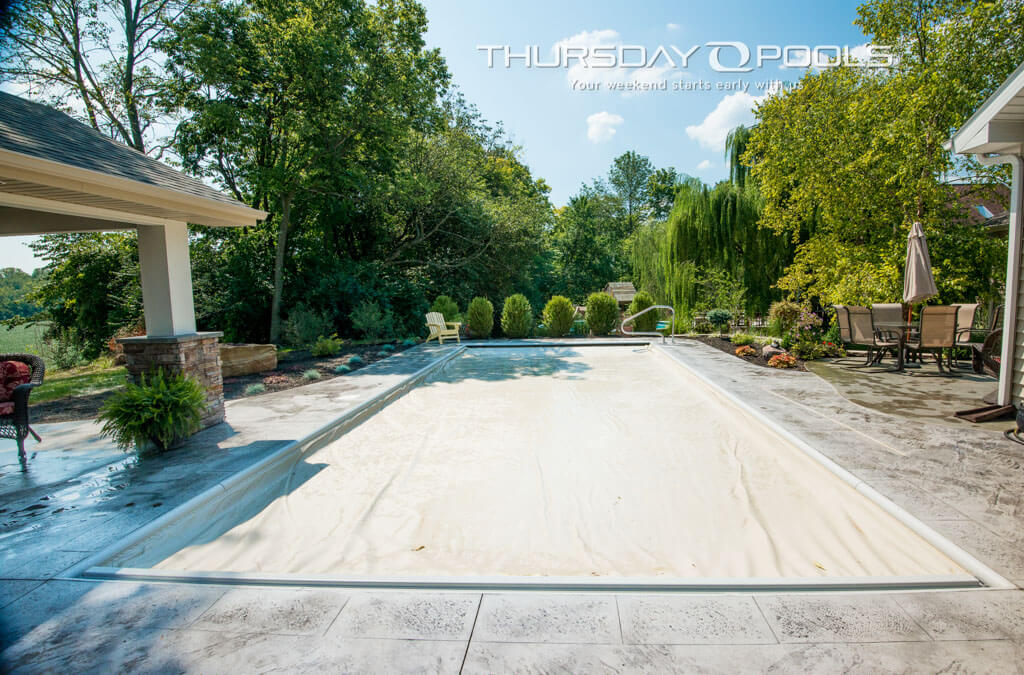
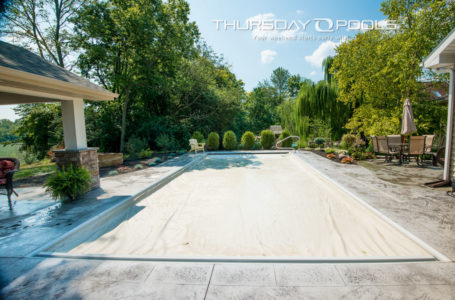 For some, it’s a season of denial, but when that first multi-hued leaf hits the water, it’s hard to ignore the reality that it’s fast becoming time to close the pool. If you’re in a temperate climate, you’ll want to winterize your pool to set yourself up for continued enjoyment when the weather is warmer. Whether closing an above-ground pool or an inground pool, many of the same principles apply. However, your regimen and costs may vary if you are closing a vinyl or gunite inground pool. For a more in-depth comparison of fiberglass vs vinyl vs gunite, download our
For some, it’s a season of denial, but when that first multi-hued leaf hits the water, it’s hard to ignore the reality that it’s fast becoming time to close the pool. If you’re in a temperate climate, you’ll want to winterize your pool to set yourself up for continued enjoyment when the weather is warmer. Whether closing an above-ground pool or an inground pool, many of the same principles apply. However, your regimen and costs may vary if you are closing a vinyl or gunite inground pool. For a more in-depth comparison of fiberglass vs vinyl vs gunite, download our 